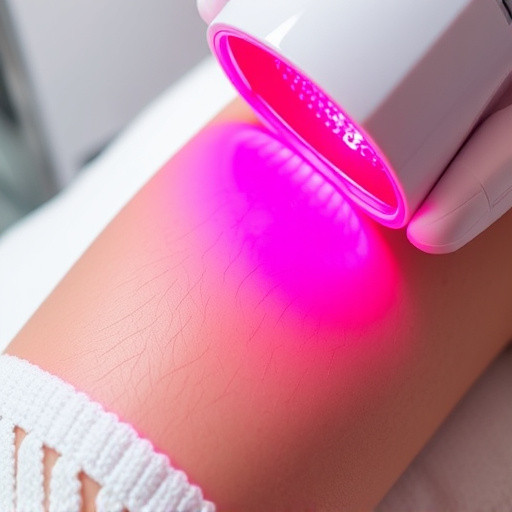Melasma, caused by hormonal shifts and sun exposure, manifests as dark facial patches. Treatment focuses on balancing hormones and reducing melanin production, using methods like hydroquinone, retinoids, chemical peels, microdermabrasion, laser hair removal, or IPL therapy under dermatologist guidance for personalized, effective melasma treatment.
Melasma, often referred to as ‘mask of pregnancy,’ is a common skin condition characterized by dark patches on the face. This article delves into understanding melasma by exploring its causes, ranging from hormonal changes to sun exposure, and symptoms, including asymmetrical hyperpigmentation. We further provide an overview of treatment options, emphasizing the importance of consulting dermatologists for personalized solutions. Discover effective strategies to manage and reduce the appearance of melasma, with a focus on accessible melasma treatment methods.
- Melasma Causes: Uncovering the Underlying Factors
- Recognizing Symptoms: How to Identify Melasma
- Treatment Options: Exploring Effective Melasma Solutions
Melasma Causes: Uncovering the Underlying Factors

Melasma, often referred to as ‘mask of pregnancy,’ is a common skin condition characterized by dark patches on the face. Understanding its causes is pivotal in exploring effective melasma treatment options. While the exact etiology remains partially elusive, several factors contribute to its development. Hormonal fluctuations, particularly during pregnancy or due to contraceptive pills, are significant triggers. This hormonal shift can lead to an overproduction of melanin, the pigment responsible for skin color, resulting in melasma’s distinctive hyperpigmentation.
Additionally, environmental stimuli play a crucial role. Exposure to sunlight, certain cosmetics, and even stress have been implicated in the onset or exacerbation of melasma. Skin rejuvenation techniques that target melanin production and pore refinement may offer potential solutions. By addressing these underlying factors, melasma treatment can help restore skin health and minimize the appearance of discoloration.
Recognizing Symptoms: How to Identify Melasma

Melasma is a skin condition characterized by dark patches on the face, often appearing as brown or grayish-black spots. Recognizing the symptoms is crucial in understanding whether you have melasma and seeking appropriate melasma treatment. One of the key indicators is asymmetry; these patches typically appear on both sides of the face, with no distinct border between them. They frequently occur on areas like the cheeks, upper lip, bridge of the nose, and forehead—zones often exposed to sunlight.
While melasma can develop without any noticeable cause, several factors contribute to its onset. Hormonal changes, for instance, during pregnancy or while taking oral contraceptives, are common triggers. Additionally, exposure to the sun’s ultraviolet rays plays a significant role, making skin health and protection from UV radiation essential in managing and preventing melasma. There are various acne treatments and anti-aging treatments that can also inadvertently exacerbate melasma symptoms.
Treatment Options: Exploring Effective Melasma Solutions

Melasma treatment involves a multi-faceted approach due to its complex nature. While there’s no cure, various effective melasma treatment options can help reduce symptoms and restore skin health. One common method is topical treatments, such as hydroquinone or retinoids, which lighten dark spots and even out skin tone. Chemical peels and microdermabrasion are also popular, offering deeper exfoliation to reveal healthier skin.
For more severe cases, procedures like laser hair removal and intense pulsed light (IPL) therapy can significantly improve melasma by targeting pigmented areas. However, it’s crucial to consult a dermatologist to determine the best course of action based on individual needs. They can guide through the appropriate melasma treatment, considering skin type, severity, and personal preferences, ensuring optimal results while minimizing potential side effects.
Melasma, often referred to as ‘mask of pregnancy,’ is a skin condition characterized by dark patches on the face. By understanding its causes, recognizing symptoms early, and exploring tailored treatment options like topical creams, laser therapy, or chemical peels, individuals can effectively manage and reduce the appearance of melasma. These comprehensive approaches ensure that those affected can regain their confidence with improved skin clarity and an even complexion. Remember, proper skincare routines and expert advice are key to managing melasma effectively.














